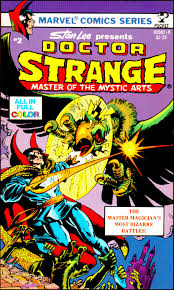 The Polish term sybirak... is synonymous to the Russian counterpart sibiryak (a dweller of Siberia) and generally refers to all people resettled to Siberia... it is in most cases used to refer to Poles who have been imprisoned or exiled to Siberia.
The Polish term sybirak... is synonymous to the Russian counterpart sibiryak (a dweller of Siberia) and generally refers to all people resettled to Siberia... it is in most cases used to refer to Poles who have been imprisoned or exiled to Siberia.After Mass today, I was speaking with a Polish-American acquaintance. She told me some family stories. One reminded me of Jonathan Safran Foer's novel Everything Is Illuminated, in which
A young American Jew, who shares a name with the author, journeys to Ukraine in search of Augustine, the woman who saved his grandfather's life during the Nazi liquidation of Trachimbrod, his family shtetl.As for my acquaintance: it seems that the woman had a relative who, along with his family, was deported from Poland to Siberia during World War II. Every day, Russian soldiers would tramp through, tossing the dead from the train. The relative grew so sick, he was mistaken for dead and, so, was tossed out.
According to the relative, he was revived by a black dog licking his face. (The relative could not say for sure if this was a real dog or, frozen and feverish, something he merely imagined.) From there, the relative struck out across the tundra. He was eventually taken in and shielded by a Jewish family. After the War, he was reunited with the fragments of his family.
 Of course, it was his good fortune to be removed from the train as he may well have perished in a Siberian prison camp. As for being mercifully awakened by a dog...? In many cultures, the black dog represents death (in some Scandinavian countries, it's a white dog). One thinks of Cerberus, the hellhound. Or of Cadejo: "a big black dog that haunts naughty young men who walk late at night on rural roads." In this case, ironically, the black dog brought life (unless the black dog was death and, inexplicably, spared the man).
Of course, it was his good fortune to be removed from the train as he may well have perished in a Siberian prison camp. As for being mercifully awakened by a dog...? In many cultures, the black dog represents death (in some Scandinavian countries, it's a white dog). One thinks of Cerberus, the hellhound. Or of Cadejo: "a big black dog that haunts naughty young men who walk late at night on rural roads." In this case, ironically, the black dog brought life (unless the black dog was death and, inexplicably, spared the man).This reminds me of traditions in which animals play a seminal role.
- The founders of Rome: Romulus and Remus, suckled by the she-wolf
- In Norse lore: Auoumbla the cow who, by licking the ice, uncovers Buri, the first man
In the Sky World, there was a Tree of Life that was very special to the people of the Sky World. They knew that it grew at the entrance to the world below and forbade anyone to tamper with the Tree. One woman who was soon to give birth was curious about the Tree and convinced her brother to uproot the Tree.
Beneath the Tree was a great hole. The woman peered from the edge into the hole and suddenly fell off the edge. As she was falling she grasped at the edge and clutched in her hand some of the earth from the Sky World. As she fell, the birds of the world below were disturbed and alerted to her distress. The birds responded and gathered a great many of their kind to break her fall and cradle her to the back of a great sea turtle. The creatures of the water believed that she needed land to live on, so they set about to collect some for her. They dove to the great depths of the world's oceans to gather earth to make her a place to live. Many of the animals tried to gather the earth from the ocean floor, only the muskrat was successful. With only a small bit of earth brought onto turtle's back from his small paws, Turtle Island began to grow.
 Who knows what fate holds? When it is better to be expelled from a train than to stay aboard.
Who knows what fate holds? When it is better to be expelled from a train than to stay aboard.Who knows from where our saviors will emerge? A sickness. A stranger. A muskrat. A dog.



































